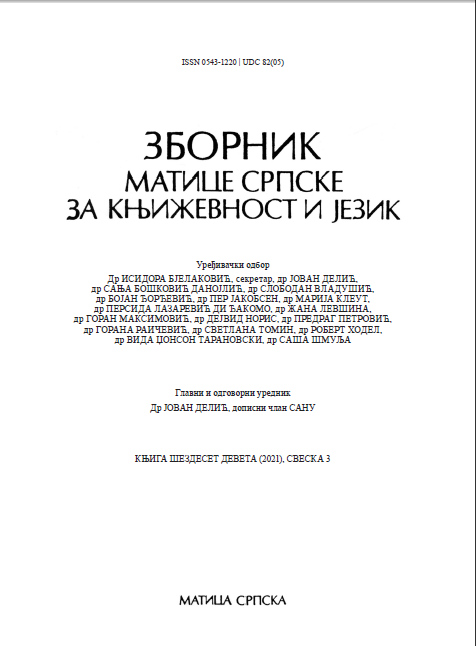ЛИНГВОСТИЛИСТИЧКИ И НАРАТОЛОШКИ АСПЕКТИ ПАРАФРАЗЕ
LINGUOSTYLISTIC AND NARRATOLOGICAL ASPECTS OF PARAPHRASE
Author(s): Snežana М. Milosavljević MilićSubject(s): Theory of Literature
Published by: Матица српска
Keywords: paraphrase; foreign speech; representology; narratology
Summary/Abstract: The paper questions the justifiability of a literary theoretical actualization of par¬aphrase, the figure that contemporary theories of alterity and poststructuralist paradigm have made an unnecessary and anachronous sign of referential delusion. A remnant of a rhetorical understanding of paraphrase which implies a synonymy of words and thoughts, as well as a general possibility that two texts have the same meaning, which is confirmed by the definitions of this figure in contemporary lexicographic publications, burdens the paraphrase in the present time of postdeconstruction. In translatological and linguistic theories paraphrase is connected to the concepts of “reformulation” of Roman Jakobson and “interpretant” by C. S Peirce. In contemporary linguostylistic research paraphrase is studied primarily in the context of the theory of metaphor as a living discourse of discus¬sion, which is traced back to the judgment of the “heresy of paraphrase” in the poetry of C. Brooks. A larger potential for the theoretical description of paraphrase and its role in the context of literary scientific research is found in postclassical narratology and representology, which are based on Bakhtin’s theory of Other’s speech as “speech within speech, utterance within utterance, but simultaneously speech about speech and utterance about utterance” (1980: 128). Pointing to the “delusion of direct speech” in Genette’s taxonomies, M. Sternberg interprets the negative consequences of adopting Plato’s dis¬tinction between mimesis and diegesis, which are reflected in the fusion of formal and representational criteria. According to Sternberg, any form of transferred discourse is just a symptom of an endless approximation and distancing from the original and the only equivalence that traditional mimesis can rely on is the “equivalence of homonymy” (1982: 133). Bakhtin’s view that direct speech also sees someone else’s utterance differently supports our presupposition that in the paraphrase that occurs in a literary text as a substitution or a comment on the quote of a protagonist’s speech/thought we should also see another narrative convention, a different story originating from a simultaneous extension and contraction of sense as an ambiguous characteristic of paraphrase. This is partly a conclusion that leads towards figurativity as an (inevitable) quality of language itself.
Journal: Зборник Матице српске за књижевност и језик
- Issue Year: 69/2021
- Issue No: 3
- Page Range: 679-690
- Page Count: 12
- Language: Serbian

